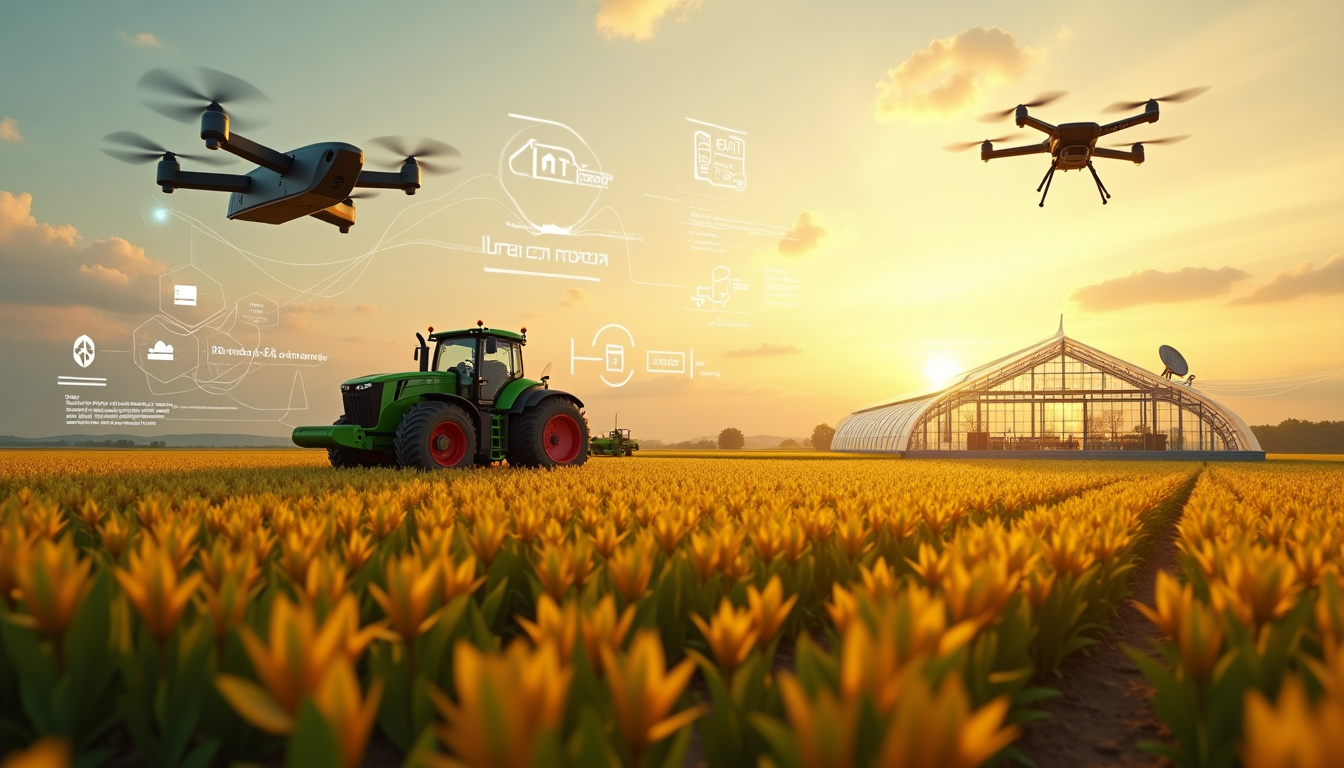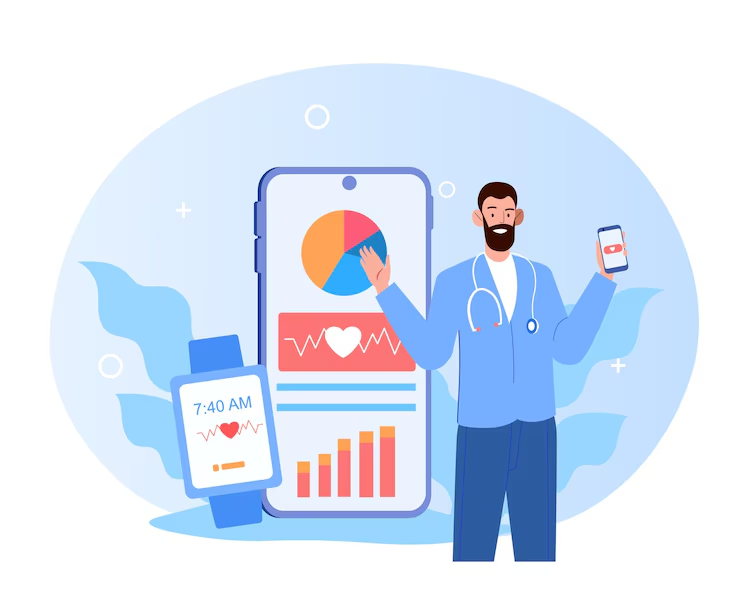What Is AI in Agriculture?
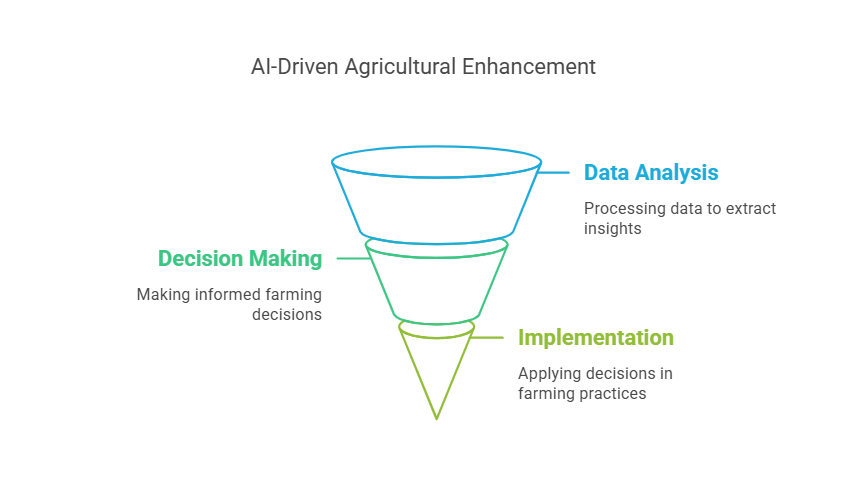 Sometimes called AI-powered agriculture or AI-driven farming solutions, this term refers to the integration of machine learning in agriculture practices. By pairing smart algorithms with real-time data (from drones, sensors, and other tech), farmers can optimize their operations. That optimization may involve deciding how much water to use at each growth stage, pinpointing the exact nutrient levels each field requires, or even detecting emerging pests before an outbreak occurs. At its core, AI in Agriculture is an approach that leverages complex computational models to deliver accurate insights quickly. These models can run on powerful cloud-based platforms or increasingly on the edge via farm-based servers or smart devices, guiding decisions in real-time. The aim is straightforward: apply intelligence to daily fieldwork so that each square meter of farmland is used in the best possible way.
Sometimes called AI-powered agriculture or AI-driven farming solutions, this term refers to the integration of machine learning in agriculture practices. By pairing smart algorithms with real-time data (from drones, sensors, and other tech), farmers can optimize their operations. That optimization may involve deciding how much water to use at each growth stage, pinpointing the exact nutrient levels each field requires, or even detecting emerging pests before an outbreak occurs. At its core, AI in Agriculture is an approach that leverages complex computational models to deliver accurate insights quickly. These models can run on powerful cloud-based platforms or increasingly on the edge via farm-based servers or smart devices, guiding decisions in real-time. The aim is straightforward: apply intelligence to daily fieldwork so that each square meter of farmland is used in the best possible way. The Importance of Data
Data is vital to artificial intelligence in agriculture. Historically, farmers relied on generational knowledge, weather patterns, and trial-and-error to tune their processes. Now, with digital tools capturing precise soil data, moisture content, temperature, and even leaf coloration, decision-making becomes far more reliable. What do we do with that data? Train machine learning models to spot latent patterns. For instance, if historical data indicates that a certain fertilizer ratio boosts yield during a specific rain cycle, the AI system can recommend repeating or refining that practice. By analyzing weather forecasts (sometimes very localized ones) and combining them with decades of historical farm results, these systems produce hyper-targeted directives for irrigation, fertilization, and pest control. I do recall a friend working on a lettuce farm years ago, telling me how guesswork used to determine water usage during hot summers. They’d observe the leaves. If they looked droopy, water was ramped up. If they weren’t droopy, water was cut. In contrast, AI for crop management uses sensor data from the soil itself and pairs it with climate predictions to instruct the irrigation system when and how much to water. This shift transforms guesswork into science.Key Applications of Artificial Intelligence in Farming
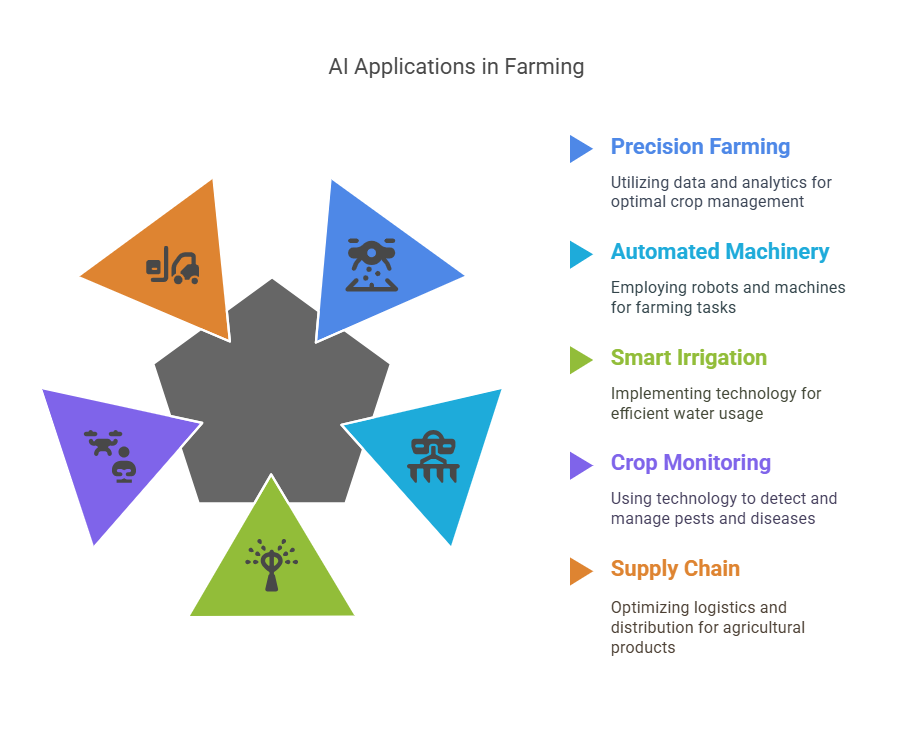
1. Precision Farming and Predictive Analytics
AI in precision farming entails using algorithms to analyze weather forecasts, historical crop data, and soil conditions so that farmers can apply inputs only where and when needed. The results of precision farming can be striking. Some farmers report yield increases of up to 20 percent while significantly lowering their water and fertilizer usage. The concept of predictive analytics also reduces the risk of tardy planting times or missed opportunities for pest intervention. But is AI alone enough? Typically, AI-driven solutions work in tandem with advanced sensors, drones, and even satellite imagery. These provide up-to-date snapshots of fields that can pinpoint micro-variations in plant health across the entire farm. Machine learning in agriculture then uses these snapshots to detect anomalies, such as nutrient deficiencies, well before they’re visible to the human eye.2. Automated Machinery and Robotics
Agricultural automation with AI touches on everything from driverless tractors to fully autonomous drones. These have the potential to operate 24/7 with minimal human supervision. Self-operating tractors can plow, seed, and harvest around the clock, guided by GPS signals and AI-based route optimization. People sometimes fear these robotics might replace human jobs, but many see them as tools that free up agricultural workers to focus on other tasks that demand a human touch, like evaluating unusual crop diseases or refining the farm’s overall strategic plan. Additionally, drones equipped with AI can conduct aerial surveys of massive properties in minutes, which would’ve taken a ground team days. They identify trouble spots that might have pest infestations or weeds competing with crops. Then, they communicate that real-time data to robotic sprayers that can precisely target the problem areas. The synergy can be quite remarkable, especially for large-scale operations.3. Smart Irrigation Systems
Water scarcity is a real concern in many parts of the globe. Smart farming AI helps farmers reduce water wastage by using only the amount needed, at the correct interval. By harnessing soil moisture sensors, weather forecast data, and machine learning algorithms, irrigation systems can make micro-adjustments to water flow in real-time. That’s far superior to scheduling fixed watering times that ignore unexpected weather changes or shifts in soil composition. In some advanced systems, each irrigation unit is connected wirelessly to cloud-based AI for crop management. As soon as the system senses any anomaly in moisture levels, it adapts the next watering cycle automatically. This approach not only conserves water but also prevents overwatering, which can lead to root rot and other issues that harm yields.4. Automated Crop Monitoring and Pest Control
AI-driven farming solutions have opened new avenues for monitoring fields at scale. Sophisticated algorithms can evaluate image data to detect early signs of pests, crop diseases, or nutrient deficiencies. Farmers are then alerted to the nature and location of the problem, often long before it explodes into a major threat that affects the entire field. As a practical example, consider an AI model trained to recognize early leaf discoloration typical of a fungal infection. Once the AI sees it in aerial images or sensor feeds, growers can respond quickly with targeted treatments. That’s far different from old approaches that would require farmers to walk fields daily. Prompt discovery of issues often means smaller chemical usage, which reduces environmental impact and operating costs.5. Supply Chain Optimization
Aside from the fields themselves, artificial intelligence in agriculture can streamline the supply chain. It predicts harvest times, identifies peak windows for packing, and manages logistics for shipping. This ensures produce arrives fresh at distributors or directly to consumers without unnecessary delays. In some parts of the world, more than 30 percent of fruit and vegetables spoil before they ever reach grocery stores. AI-based supply chain management is designed to shrink that wastage. An advanced system might calculate the optimal route for trucks, factoring in traffic, road closures, or weather conditions that could slow delivery. It might also coordinate distribution so that local markets don’t become oversupplied while other regions remain underserved. By doing so, it boosts overall efficiency and cuts operational costs.Key Steps to Implementing AI-Driven Farming Solutions
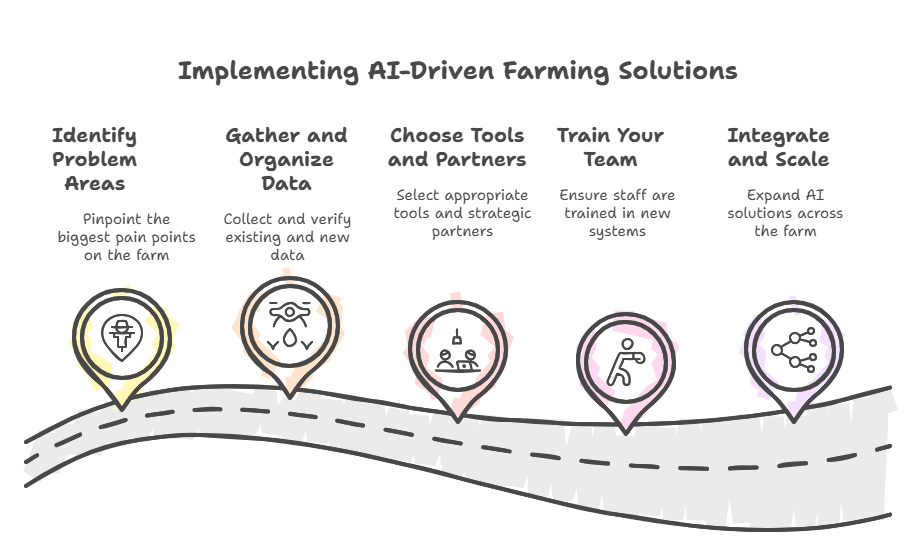
Step 1: Identify the Problem Areas
Every farm is unique. Start by pinpointing the biggest pain points: water mismanagement, labor shortages, inconsistent yields, unpredictable pest outbreaks, or supply chain snags. Outline them clearly. The beauty of AI in Agriculture is that it’s flexible enough to address multiple issues at once, but you’ll still want to prioritize which ones matter most to your operation.Step 2: Gather and Organize Data
Next, gather any existing data you have, such as yield records, weather logs, soil test results, and equipment performance logs. If your data is limited, begin installing sensors or investing in drone imagery to fill those gaps. Good AI demands good data, so verifying data accuracy is paramount. Even small inaccuracies can throw off predictions in a big way.Step 3: Choose the Right Tools and Partners
Selecting the right software, hardware, or service providers can be critical. Some solutions might focus heavily on crop health monitoring, whereas others emphasize irrigation management or supply chain improvements. While it might be tempting to build everything in-house, many find it more strategic to partner with experienced providers who can guide them in building a comprehensive solution. If you feel a bit overwhelmed, it might be time to have a conversation with Buildfuture. Our team can streamline the process and steer you toward the best approach for your land’s needs.Step 4: Train Your Team
AI is only as effective as the people operating it (or interpret its outputs). Ensure your staff is trained to handle the new equipment and software, interpret data insights, and respond to system alerts. Without human expertise, even the best AI might fail to achieve the desired outcome. You might also need to update your cybersecurity practices to keep your new digital infrastructure safe.Step 5: Integrate and Scale
Once initial tests confirm your new AI-driven farming solutions are functioning well at a small scale, expand them to cover entire fields or multiple sites. This might involve deploying more sensors, upgrading connectivity, or even investing in additional automation. By scaling gradually, you can monitor each stage’s effectiveness and iron out any kinks before rolling the solution out across all your farmland.Real-World Examples of Smart Farming AI
- California Vineyards: Vineyards in California’s Napa Valley use drone-based imagery and machine learning to assess grapevine health. By identifying stressed vines early, they can precisely administer water and nutrients. These wineries report significant yield increases and better, more consistent grape quality.
- Netherlands Greenhouses: The Netherlands is known for its advanced use of artificial intelligence in farming. Many greenhouses are fully automated, with AI systems controlling temperature, humidity, and LED lighting color. These parameters shift throughout the day according to cloud-based analytics, enabling some growers to produce up to four times the usual amount of vegetables in the same area of land.
- Smallholder Farms in Africa: AI for crop management can also benefit small farmers who don’t have extensive resources. Mobile apps that leverage satellite data help them pinpoint optimal planting dates for different crops. The result is an increase in yields and a decrease in the frequency of crop failure despite challenging, unpredictable rainfall patterns.
Challenges, Risks, and Considerations
 Like all technology, AI-driven farming solutions come with hurdles. For many, the cost of hardware and software licenses is a sticking point. Managing data security is another issue, especially when everything from tractor route data to supply chain analytics is stored on remote servers. I’ve sometimes heard farmers express concerns about their data being accessible to outside parties. In regions with underdeveloped infrastructure, connectivity is a barrier. If you rely on real-time sensor data but the farm’s internet connection is spotty, you might lose critical updates. Another consideration is the skill gap among farmworkers. Adapting to new tech can be a big learning curve, which might require initial training or hiring specialized staff. Despite these obstacles, the long-term cost reductions and yield gains often outweigh the expenses and complexity. Achieving success requires a combination of good planning, the right partnerships, and a willingness to adapt. If you’re attempting a major overhaul, consider a pilot project on a fraction of your land. By working with a reliable technology partner or consultant, you can minimize mistakes at the onset.
Like all technology, AI-driven farming solutions come with hurdles. For many, the cost of hardware and software licenses is a sticking point. Managing data security is another issue, especially when everything from tractor route data to supply chain analytics is stored on remote servers. I’ve sometimes heard farmers express concerns about their data being accessible to outside parties. In regions with underdeveloped infrastructure, connectivity is a barrier. If you rely on real-time sensor data but the farm’s internet connection is spotty, you might lose critical updates. Another consideration is the skill gap among farmworkers. Adapting to new tech can be a big learning curve, which might require initial training or hiring specialized staff. Despite these obstacles, the long-term cost reductions and yield gains often outweigh the expenses and complexity. Achieving success requires a combination of good planning, the right partnerships, and a willingness to adapt. If you’re attempting a major overhaul, consider a pilot project on a fraction of your land. By working with a reliable technology partner or consultant, you can minimize mistakes at the onset. Future of AI and Machine Learning in Agriculture
We’re in the middle of a transformation that shows no sign of slowing. The future of AI in Agriculture includes greater integration between machine learning in agriculture and other emerging technologies like blockchain for supply chain transparency. It also involves more robust data sharing among farmers, researchers, and government agencies. This collaborative data ecosystem can spur better predictive models that everyone can tap into. We may soon see fleets of fully autonomous vehicles working day and night, closely orchestrated by AI-based command centers. Or vertical farming operations in urban areas that rely completely on artificial intelligence in farming strategies to maximize crop density in enclosed, climate-controlled environments. The result could be an unprecedented efficiency in how crops are grown, distributed, and consumed. Curious about how your existing operation can evolve? One straightforward approach is to start using advanced analytics with existing data sets. Visualizing historical yields, for instance, can help you forecast next season more accurately. For more complete end-to-end solutions, plenty of specialists can guide you through the complexities of agricultural automation with AI. Seeking help early can save resources down the line.A Quick Technology Comparison
Below is a simplified table illustrating different AI-based tools used in agriculture, along with the primary tasks they perform. This is by no means an exhaustive list, but it might help clarify which technologies align with your particular needs.| AI-Based Tool | Primary Tasks | Suitable For |
|---|---|---|
| Drones with AI Vision | Aerial mapping, early pest detection, imaging | Large-scale farms, vineyards |
| Smart Irrigation Systems | Automated watering based on moisture data | Regions with water scarcity |
| Driverless Tractors | Autonomous plowing, seeding, and harvest | Broad-acre operations |
| ML Analytics Platforms | Yield prediction, weather analytics, supply chain | Mid to large farms or cooperatives |
| Robotic Sprayers | Targeted pesticide/fertilizer application | Farms seeking chemical reduction |
Practical Solutions for Modern Farming
Struggling with pest outbreaks that eat into your profits? It might be time to explore innovative farming techniques that improve crop protection. Have you considered installing advanced monitoring systems on your farm? Let’s discuss a strategy that aligns with your budget and timeline. Looking for an all-in-one system that integrates soil health monitoring, supply chain management, and weather forecasting? Buildfuture can help create a customized plan for your farm’s success.
If you’ve ever thought about optimizing labor efficiency, don’t hesitate to reach out. The right tools and methods can enhance productivity without replacing your workforce. Perhaps your priority is long-term sustainability—exploring efficient irrigation systems and natural soil enhancement techniques can ensure your land remains fertile for generations.
Maybe you just need guidance on maximizing fertilizer effectiveness. A consultation with Buildfuture can help identify cost-saving strategies and ways to improve yield. If you’re looking to test new methods on a small section of your farm, we can guide you through best practices to ensure a smooth transition and minimize risks.
Wrapping Things Up
In essence, AI in Agriculture is revolutionizing how we plant, grow, and harvest food. By intertwining robotics, data analytics, and advanced sensors, the new generation of farmers can use resources at an unparalleled level of efficiency. The range of applications is broad: precision farming, smart irrigation, automated pest detection, and supply chain management are just a few. Sure, implementing artificial intelligence in agriculture is not without its hurdles. Infrastructure costs, connectivity issues, and training requirements all loom large. Yet the scale of benefits, from bigger harvests to lower costs, is pushing more farms toward adoption. And it’s not merely for giant agribusinesses. Even smaller operations are leveraging machine learning in agriculture to remain competitive and sustainable. If you’re wondering how to get started or how to improve your existing setup, consider a small upgrade or pilot program rather than a massive overhaul. Start with those pressing challenges, get comfortable with the data, train your team, and then expand. That approach has helped countless farms ease into AI without stumbling over major pitfalls. And if you want specialized guidance along the way, Buildfuture is standing by to assist. We’ve seen how transformative AI and IoT in farming can be. Buildfuture’s expertise lies in helping agribusinesses harness the smartest farming technologies and strategies from the ground up. Whether you’re dealing with one orchard or hundreds of acres, we know how to integrate AI for crop management seamlessly into your processes. Our mission is to make your farming enterprise both more profitable and more sustainable. And if that resonates with your vision, why not contact us to explore the possibilities? We’ll be glad to help you harvest the potential.
